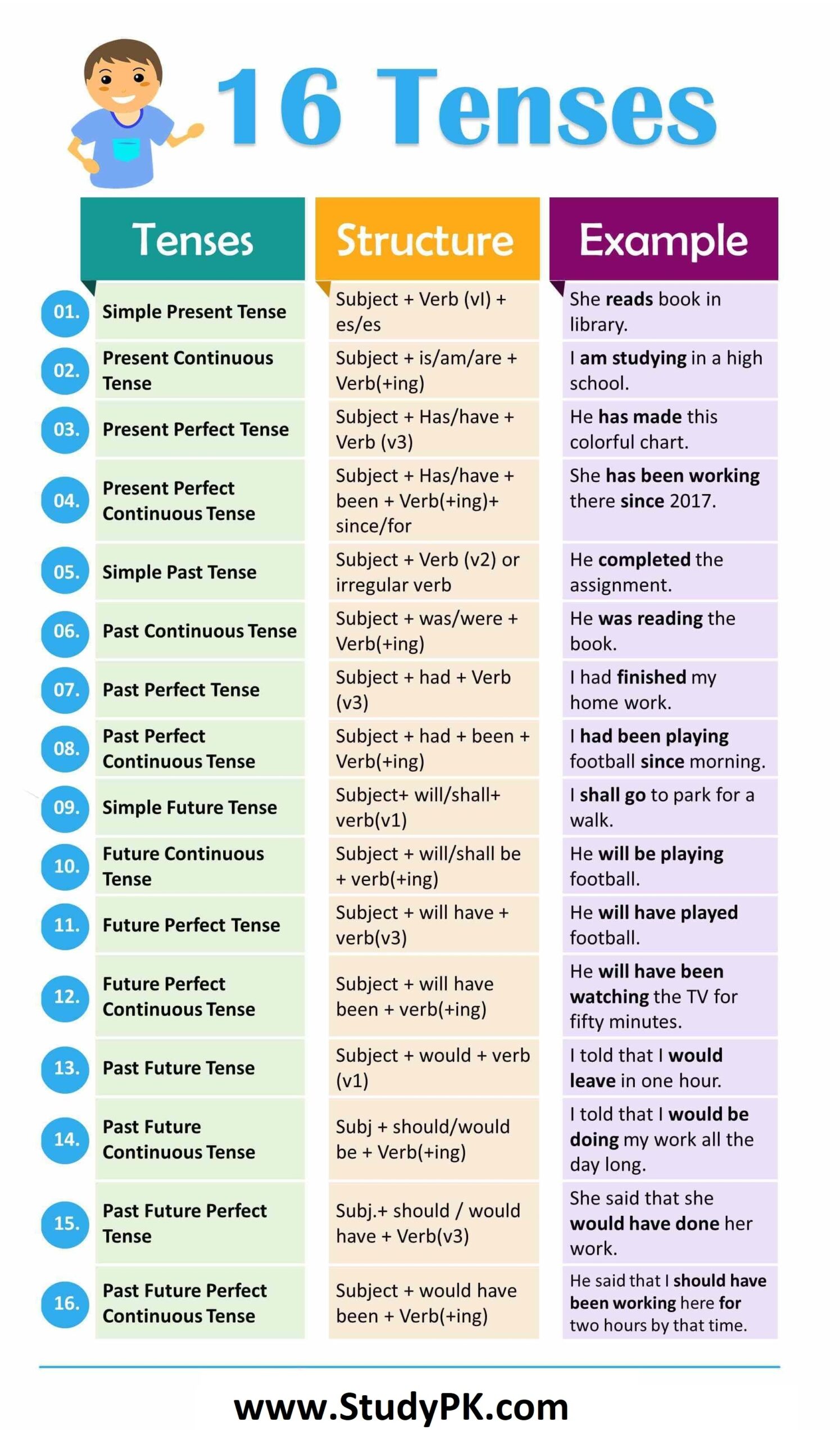Understanding tenses in English is essential for effective communication. Tenses help us convey when an action took place, whether it is in the past, present, or future. By using the appropriate tense, we can provide clarity and accuracy in our communication.
There are different types of tenses in English, each serving a specific purpose. From simple present and past tenses to perfect and continuous tenses, mastering these forms can greatly enhance your language skills.
Tenses in English with Formula
The formula for constructing tenses in English involves using the correct auxiliary verbs (e.g., “to be,” “to have”) along with the main verb in its different forms. Here are some common tenses along with their formulas:
1. Simple Present Tense: Subject + Base Form of Verb
2. Simple Past Tense: Subject + Past Form of Verb
3. Present Continuous Tense: Subject + “to be” + Present Participle
4. Present Perfect Tense: Subject + “to have” + Past Participle
5. Past Continuous Tense: Subject + “to be” + Present Participle
By following these formulas and understanding the usage of each tense, you can effectively communicate your ideas in English.
Practice is essential in mastering tenses in English. By regularly using different tenses in your spoken and written communication, you can improve your language skills and become more proficient in expressing yourself accurately.
Remember to pay attention to the context in which each tense is used, as this can greatly impact the meaning of your sentence. Whether you are talking about the past, present, or future, choosing the right tense is crucial for effective communication.
In conclusion, tenses in English play a vital role in conveying the timing of actions and events. By understanding the formulas for different tenses and practicing their usage, you can enhance your language skills and communicate more effectively. So, keep practicing and incorporating different tenses in your daily communication to become a more fluent English speaker.
